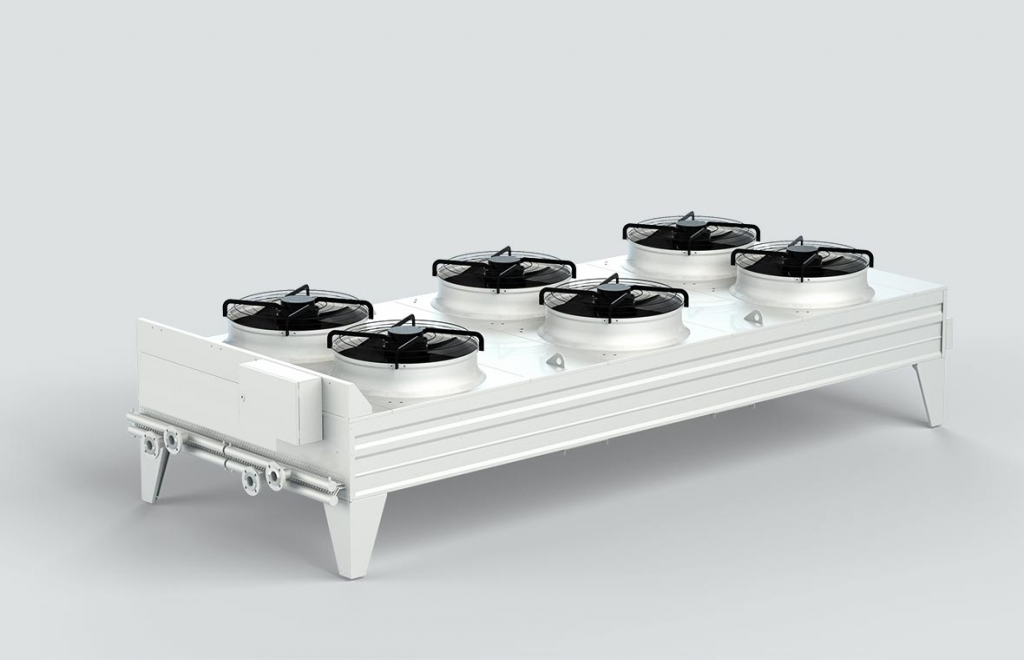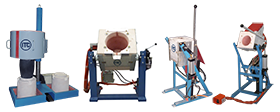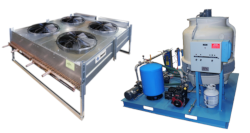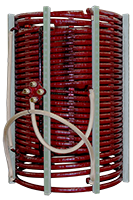
Dry Type Closed Cooling Systems
ITC manufactures induction melting furnaces, commonly used in various industries to heat and melt metals. These furnaces require a cooling system to prevent the furnace components from overheating and sustaining damage due to high temperatures.One popular cooling solution for induction melting furnaces are the Dry Type Closed Cooling Systems. In this article, we will explore the features, benefits, and applications of dry coolers for induction melting furnaces.
Dry coolers utilize water as the cooling medium to dissipate heat from the furnace components. Unlike open cooling systems that rely on an open water source or evaporative cooling towers, dry coolers use a closed-loop design. In this system, water or glycol is circulated through a closed loop, absorbing heat from the furnace components. The heated water is then passed through a heat exchanger, which transfers the heat to another medium, typically air, before the cooled water is recirculated back to the furnace components.
Benefits
- Efficient Heat Dissipation: Dry coolers are efficient in dissipating heat. The closed-loop design ensures that the water remains uncontaminated, optimizing its cooling properties and facilitating consistent heat removal from the furnace components. The use of a heat exchanger further enhances the heat transfer process, allowing for efficient cooling.
- Reduced Water Consumption: Although water is used as the cooling medium, dry coolers significantly reduce water consumption compared to open cooling systems. The closed-loop design minimizes water wastage and the need for constant water replenishment, making it a more environmentally friendly option.
- Versatility and Adaptability: Dry type closed cooling systems are versatile and adaptable to various industrial applications. They can be designed and customized to meet specific cooling requirements, making them suitable for different sizes and types of induction melting furnaces. These systems can handle high-temperature operations and effectively cool the furnace components.
- Cost Savings: Dry type closed cooling systems offer cost savings in multiple ways. They reduce water consumption, resulting in lower water utility costs. Additionally, the closed-loop design minimizes the risk of water contamination, reducing maintenance and cleaning expenses. The overall operational efficiency of the system contributes to energy savings as well.
Limitations and Considerations
While dry type closed cooling systems provide numerous benefits, there are a few considerations to keep in mind:
- Suitable for drier climates. Humid air will reduce the cooling capacity.
- Limited cooling potential, compared to other cooling processes
- Space and Equipment Requirements: may require additional space for the installation of heat exchangers, pumps, and other associated equipment. The availability of space and appropriate infrastructure should be considered during system planning and implementation.
- Maintenance and Monitoring: Regular maintenance and monitoring are necessary to ensure the proper functioning of the system. This includes periodic checks for leaks, proper functioning of pumps and valves, and the cleanliness of the heat exchanger.
Dry type closed cooling systems offer efficient and reliable cooling solutions for induction melting furnaces. With their closed-loop design and utilization of water as the cooling medium, these systems effectively dissipate heat and maintain optimal operating temperatures. They provide versatility, reduced water consumption, and cost savings, making them an ideal choice for a wide range of industrial applications. Proper consideration of water quality, space requirements, and regular maintenance ensures the longevity and efficient operation.
Find out more about the different cooling system types ITC offers.




